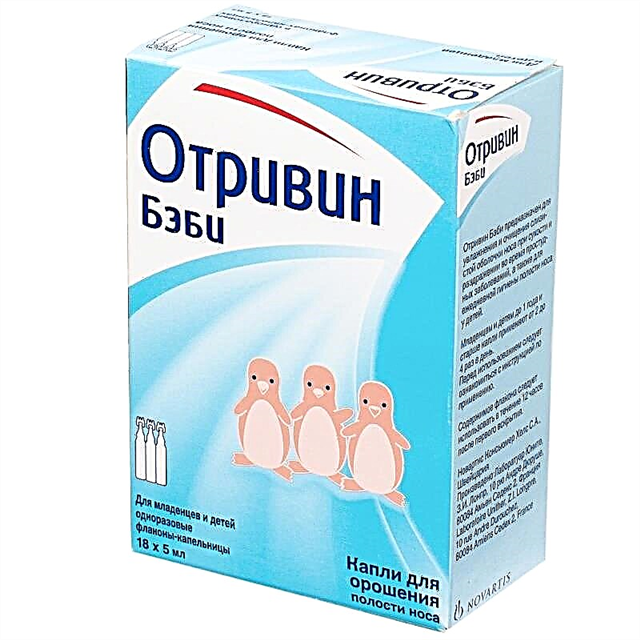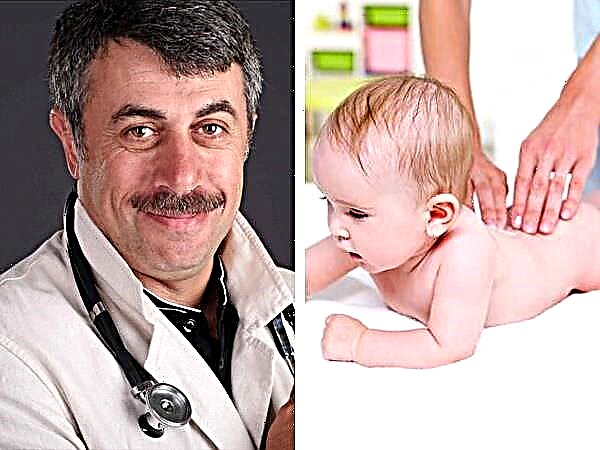Pneumonia is an inflammatory disease of the interstitial tissue of the lung that is quite common in children's practice, which occurs most often as a complication of acute respiratory diseases, and is also quite often the cause of child mortality. Taking into account the causal aspects, parents need to know the signs and types of pneumonia, take into account their characteristics and immediately, together with the doctor, start treatment and diagnostic measures.
Etiology of pneumonia
Pneumonia is an infectious lesion of the interstitial tissue of the lung, accompanied by the development of respiratory failure. Most often, pneumonia occurs in children as a complication of respiratory diseases. And the direct causes of occurrence are mainly viruses. These are parainfluenza viruses, adenoviruses, rhinos and reoviruses.
Viruses "prepare" epithelial cells for penetration and exposure to bacteria. Therefore, complications with acute respiratory infections are bacterial in nature. The causative agents are more often pneumococci, Haemophilus influenzae, Staphylococcus aureus and Pseudomonas aeruginosa. But often pneumonia in children occurs directly with a viral lesion of the lung tissue, for example, with a flu virus.
The presence of microbial agents is insufficient for the development of this serious disease. A combination of factors contributing to the development of lung disease is required. In childhood, this is a violation of the daily routine, the nature of the diet, changes in the psycho-emotional status. It is necessary to add such conditions as anomalies of the constitution, anemia, malformations of internal organs.

Young children are most at risk of developing pneumonia. This is due to the anatomical and physiological features: the terminal bronchioles contain little muscle component, mainly elastic fibers.
Consequently, the bronchioles collapse and the resulting secretion cannot push higher through the respiratory tract. It remains, causing atelectasis (collapse of the lungs) and contributing to purulent inflammation.
Children also have an imperfect immune response to infectious agents - insufficient production of interferons and immunoglobulins (in particular class A) of the respiratory tract. Accordingly, the infection from the upper sections easily spreads to the lower sections.
In childhood, the wide and short lumen of the respiratory tract also contributes to frequent pneumonia.
Classification of pneumonia

Distinguish between community-acquired and nosocomial pneumonia.
Nosocomial pneumonia occurs in a hospital after at least 72 hours of stay or no later than 72 hours after discharge from the hospital. This division must be taken into account, since most often the agents that cause this or that type of pneumonia are known, which makes it possible to begin the appropriate etiotropic therapy as soon as possible.
According to the clinic, pneumonia distinguishes between typical and atypical. This is the very moment that parents need to pay special attention to:
- with a typical course of pneumonia, children are worried about the intoxication syndrome in the form of fever, weakness, lethargy, lack of appetite, aches throughout the body. Catarrhal syndrome is represented by nasal discharge, pain and sore throat. Respiratory symptoms play a key role: respiratory failure, cough, burning sensation, heaviness and pain along the respiratory tract;
- with atypical pneumonia, the symptoms are extremely diverse. Catarrhal manifestations may be absent, an increase in body temperature is also not always observed, positive meningeal symptoms and abdominal pain are possible, but respiratory failure will always occur: shortness of breath in a child, the participation of additional respiratory muscles (nose wings and pectoral muscles).
According to the length and localization of the inflammatory process, pneumonia is divided into focal (infiltration less than 1 cm), focal-confluent (several foci are connected to each other), segmental (segment lesions), lobe (involving the whole lobe of the lung in the process) and interstitial (the whole lung, in children only as an exception).
In childhood, focal and focal-confluent species most often develop.
The first signs of pneumonia
Let's discuss the moments at which the thought of the possible development of pneumonia creeps in among parents. First of all, it is a cough, especially if the child is coughing "without stopping" and "with anguish". Cough can be very diverse: dry without sputum discharge, dry with viscous sputum difficult to separate, wet.
Some children (mostly older children) describe chest pain when coughing, heaviness in the chest. There is a lack of air, shortness of breath. That is, the description contains an obligatory component of pneumonia - this is respiratory failure.
Whatever doubts, signs do not bother parents, it is always necessary to seek qualified medical help. Only a doctor will be able to diagnose pneumonia using clinical and laboratory-instrumental diagnostic methods.
Diagnosis of pneumonia

If pneumonia is suspected, start with medical examination.
The appearance of the child has an unhealthy character - the face is pale, the child is weak, often children take a lying position, often there is mucous discharge from the nose, signs of cheilitis in the corners of the mouth.
Palpation (when examined by a doctor with the help of hands) over the affected area of the lungs, vocal tremor is increased and bronchophonia (sound conduction) is enhanced.
Percussion (when tapping the chest) the pulmonary sound is dulled over the affected area.
Of course, the results of such studies are not specific for pneumonia, they are also typical for other lung diseases, such as lung abscess, bronchitis and bronchiolitis (most typical for young children).
Auscultation can distinguish pneumonia from other diseases. With auscultation, breathing is weakened from the affected side, so you should always listen to breathing at symmetrical points, that is, in comparison with the opposite side.
In addition to weakening breathing, pneumonia is characterized by the presence of crepitus (the sound of "crunching snow") at the end of inhalation and at the beginning of exhalation. This sound indicates that air passes through the alveoli and the bubbles of the inflammatory secretion burst in the lumen of the alveoli.
With bronchitis, depending on the caliber of the affected areas, large, medium and fine bubbling rales are heard. With atypical pneumonia, breathing may not change at all. Such types of the disease are also called "dumb".
Further actions for suspected pneumonia are laboratory research.
A clinical blood test will show changes in the form of a shift of the leukoformula to the left, neutrophilia, lymphocytosis, and acceleration of the erythrocyte sedimentation rate.
In the general analysis of urine, pathological changes may not be.
In a biochemical blood test, we pay attention to C-reactive protein and procalcitonin. An increase in these indicators informs about the presence of inflammatory processes, and an increase in procalcitonin confirms the bacteriological origin of the disease.
The final confirmation of the diagnosis of pneumonia will help radiography in frontal and lateral projection of the chest organs. On the images, the radiologist will pay attention to the pulmonary pattern, to the roots of the lungs (they are also thickened in bronchitis), to the fields of the lungs. With pneumonia, depending on the extent of the lesion, there is a darkening of the pulmonary fields.
Pneumonia in newborns

We will tell you separately about pneumonia in newborns. Distinguish between congenital (antenatal), aspiration and acquired forms.
The first form develops in utero, infection occurs through the placenta. More often, the disease provokes the presence of herpes, rubella, cytomegalovirus, and mycoplasma viruses in the expectant mother. The aspiration form develops when the amniotic fluid is aspirated by the child during the passage through the birth canal of the mother and, possibly, also when infected amniotic fluid gets in and before birth, with premature respiratory movements.
Acquired pneumonia after childbirth develops no earlier than 48 hours later. In this case, infection occurs with nosocomial microflora. In all cases, pneumonia of newborns is significantly aggravated by premature birth, immaturity of the lung tissue. Babies will not have the characteristic coughing fits and fever.
In conclusion, I would like to note once again that there are no strictly specific signs for pneumonia. But with a lingering cough, at a temperature of more than four days, especially in the presence of respiratory failure, pneumonia should be excluded in the first place.



